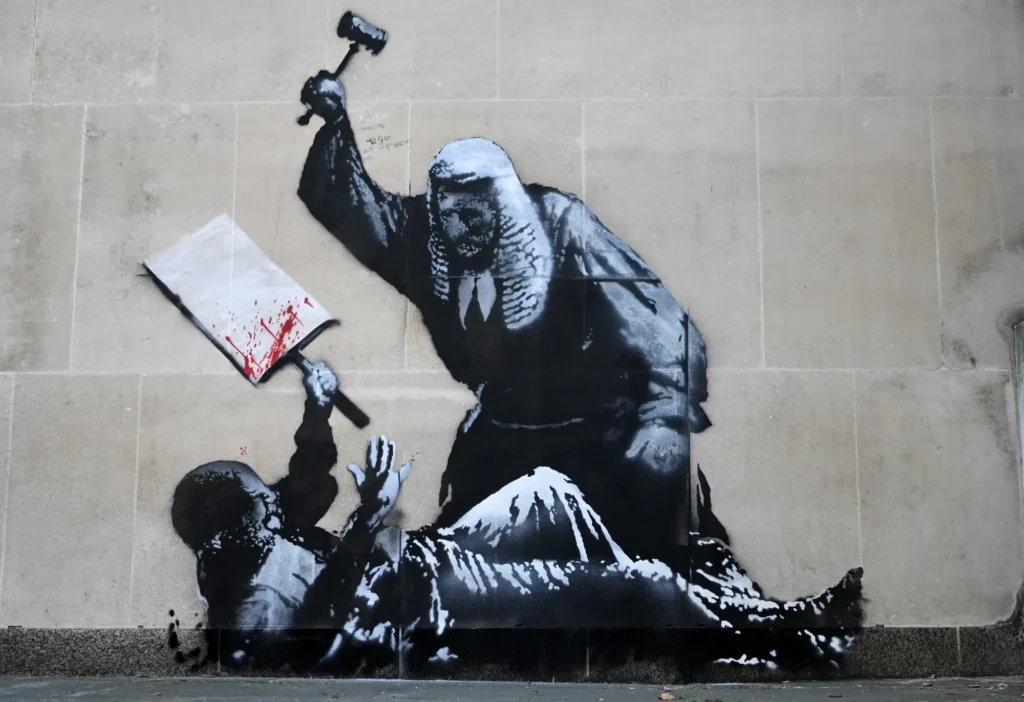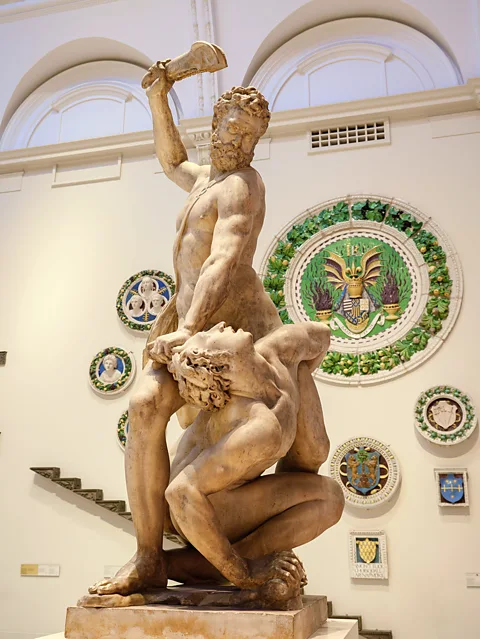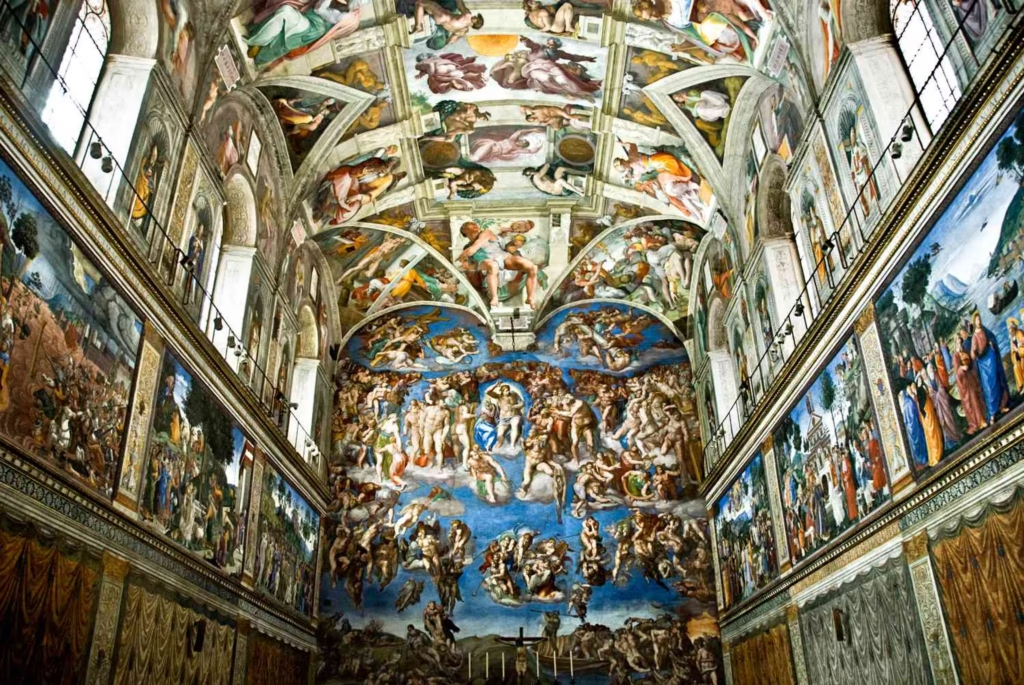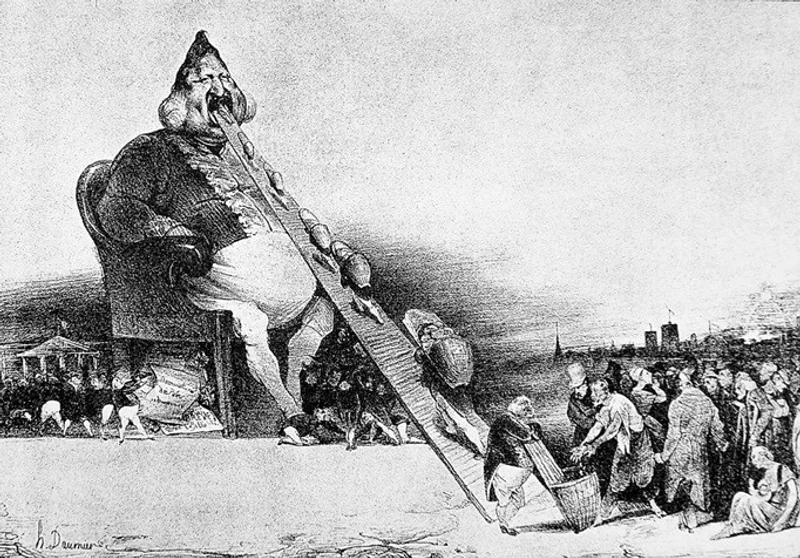From Michelangelo to Banksy, controversial artworks that fell foul of the law have shaped society’s understanding of creativity, morality, and authority for centuries. From Renaissance frescoes that provoked church censors to modern street art that challenges government institutions, artists who push boundaries often face suppression, censorship, or destruction of their work.

Banksy’s recent mural at London’s Royal Courts of Justice continues this long tradition, showing that even in the 21st century, art and controversy remain inseparable.
From Michelangelo to Banksy: The Royal Courts of Justice Mural as a Modern Act of Defiance
In September 2024, the world-renowned street artist Banksy painted a provocative mural on the side of the Royal Courts of Justice. The artwork depicted a British judge — complete with traditional wig and gown — striking a protester with a gavel, turning the judge’s tool of justice into a weapon of violence. Blood splatters formed the message on the protester’s blank placard, creating a grim symbol of suppressed dissent.
Just three days after its creation, authorities covered the mural with black plastic and steel barriers. Officials claimed it violated the Criminal Damage Act of 1971, classifying the painting as vandalism rather than art. What remained was a ghostly imprint — a faint silhouette of Banksy’s latest act of rebellion.
Banksy’s mural isn’t just about satire or street commentary. It’s a reflection of a centuries-long tension between creativity and control. His work joins a lineage of artists who have been punished for their expression — and whose creations, in some cases, were physically erased but never truly forgotten.
Michelangelo’s ‘The Last Judgment’: A Defining Work in the Michelangelo to Banksy Legacy
Long before Banksy’s murals sparked debate, Michelangelo’s fresco The Last Judgment scandalized 16th-century Rome. Completed in 1541, this monumental work covered the altar wall of the Sistine Chapel. It portrayed the dramatic moment when souls ascend to heaven or descend into hell — an awe-inspiring depiction of divine justice.
However, its vivid display of nude figures stirred outrage among religious authorities. In 1563, the Council of Trent decreed that religious art should avoid “lasciviousness” and imagery that could excite lust. Michelangelo’s masterpiece, filled with muscular, naked saints and sinners, became the target of criticism.

To appease the Church, painter Daniele da Volterra was commissioned to add draperies and coverings over the nudes. His edits earned him the mocking nickname Il Braghettone — “the breeches maker.” Though later restorations removed some of Volterra’s work, much of his censorship remains.
Michelangelo’s fresco survived, but its modification stands as one of the earliest examples of how art’s moral boundaries were redrawn by religious and political powers.
Frans Floris and the Iconoclasts: When Faith Turned Against Art
While Michelangelo’s work endured censorship, others were not so fortunate. In 1566, religious reformers in the Low Countries launched a wave of iconoclasm — the systematic destruction of religious images.
One victim of this movement was The Fall of the Rebel Angels, a triptych by the Flemish artist Frans Floris. His vibrant portrayal of saints and demons fell under attack by Protestant iconoclasts, who saw such images as idolatrous. The reformers stormed Antwerp Cathedral, tearing the triptych apart and destroying its side panels. Only the central piece survived, later restored and reinstalled when Catholicism returned.
Floris’s mutilated artwork remains a haunting symbol of the fragile relationship between belief, politics, and art — and how easily beauty can become collateral in ideological wars.
Goya’s ‘The Two Majas’: A Link in the Line from Michelangelo to Banksy
In the late 18th century, Spanish painter Francisco de Goya faced scrutiny for two portraits that tested societal boundaries — The Nude Maja and The Clothed Maja. Painted between 1797 and 1800, the works depict the same reclining woman, one fully dressed and the other unapologetically nude.
Unlike mythological nudes of classical art, Goya’s subject was a real woman — sensual, self-possessed, and unashamedly modern. Her direct gaze at the viewer defied convention. When Spanish authorities discovered that the paintings belonged to Prime Minister Manuel Godoy, the Inquisition seized them for violating decency laws.

Goya was summoned to defend himself but escaped punishment, though the paintings were locked away for decades. Today, they hang side by side in Madrid’s Prado Museum — a defiant reminder of how art once challenged morality and censorship head-on.
Honoré Daumier’s “Gargantua”: The Cartoon That Shook a Kingdom
While Goya’s controversy centered on sensuality, French artist Honoré Daumier took aim directly at political power. His 1831 lithograph Gargantua caricatured King Louis-Philippe as a grotesque giant devouring the taxes and labor of France’s poor.
The image enraged the monarchy. Authorities charged Daumier with “inciting hatred against the King,” sentencing him to six months in prison. They also destroyed the original lithographic stone to prevent further copies.
Despite official efforts to suppress it, Gargantua lived on. Surviving prints circulated secretly, turning Daumier into a hero of artistic resistance. His punishment proved that satire, even when silenced, has the power to speak louder than censorship.
Banksy’s Legacy: Art and Controversy from Michelangelo to Banksy
Fast-forward to the present, and Banksy’s erased mural at the Royal Courts of Justice stands as both art and statement. Like Daumier, Banksy uses satire to question authority. Like Michelangelo, his art exposes society’s hypocrisy. And like Goya, he provokes moral unease.
Authorities may have painted over his work, but the act of erasure itself only amplified its message. The blank wall now tells its own story — a silent protest about freedom, power, and the fine line between crime and creativity.
Banksy’s mural shows that censorship, even in the modern age, remains a powerful tool. Yet history has proven that once an image captures public imagination, no law can truly erase it. Michelangelo to Banksy
The Enduring Battle Between Art and Authority
From the Renaissance to modern London, the artists who dared to defy power have shaped not just the art world but also society’s understanding of freedom. Whether censored for nudity, blasphemy, or rebellion, each artwork reflects a moment when creativity clashed with control.
Michelangelo painted divine judgment; Floris depicted chaos and salvation; Goya explored desire; Daumier wielded satire; and Banksy continues the tradition — painting the uncomfortable truths society tries to hide.

What these artists share is defiance — a refusal to conform. Their controversial artworks that fell foul of the law remain not only historical artefacts but living testaments to art’s unbreakable spirit.
In the end, censorship can destroy a painting, cover a wall, or imprison an artist. But it cannot silence the power of an idea once it has been seen. Michelangelo to Banksy





Awesome! Its genuinely remarkable post, I have got much clear idea regarding from this post
You’re so awesome! I don’t believe I have read a single thing like that before. So great to find someone with some original thoughts on this topic. Really.. thank you for starting this up. This website is something that is needed on the internet, someone with a little originality!
Awesome! Its genuinely remarkable post, I have got much clear idea regarding from this post